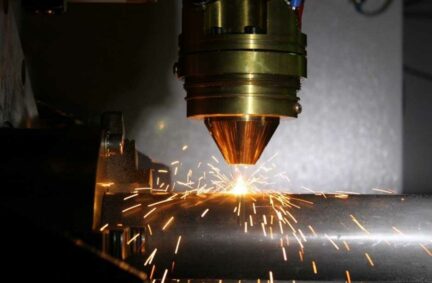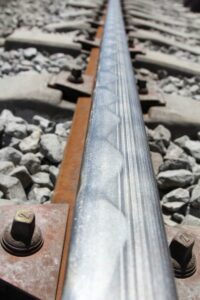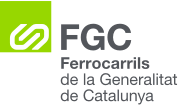INNOVATION PROJECTS
Thanks to the active international role in various institutions and forums, FGC is able to know and incorporate the innovations and trends of the sector in all its areas and different activities to put them at the service of its users.
Along the same lines, FGC participates in the following R & D & I projects formed by multidisciplinary consortia at both European and National level.
Europeans
In progress
Int5Gent
The main purpose of Int5Gent project is to develop an integral platform to provide different IoT services with 5G technologies to monitor Intelligent Infrastructures.
Developed technology will be tested in two 5G testbeds, one situated in the city of Barcelona and the other one in the city of Athens. The deployments include installations of sensors in real operational environments and operations of the 5G network.
In the case of FGC, three use cases of infrastructure monitorization services will be carried out. The objective is to obtain continuous information of the real status though 5G communications with higher capacity and better performance.
Subsidy: European program H2020

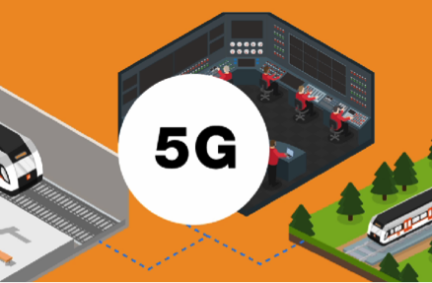
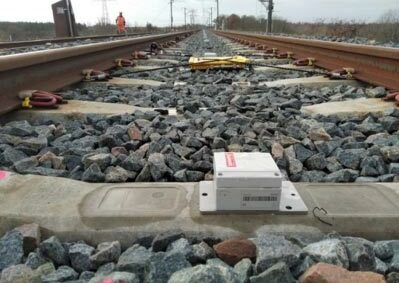
JULIA
The main objective of the JULIA project is to leverage EGNSS to boost sustainable mobility in the Public Transport sector. It aims to bring a holistic approach by optimising the combination of digitisation, public transport and EU spatial data and services to achieve more sustainable and equitable mobility for all. The benefits of equipping public transport vehicles with commercial multi-constellation GNSS receivers will be assessed to see if they are a key factor in improving location accuracy, so that public transport services can be operated more efficiently.
Funding: Horizon Europe Programme

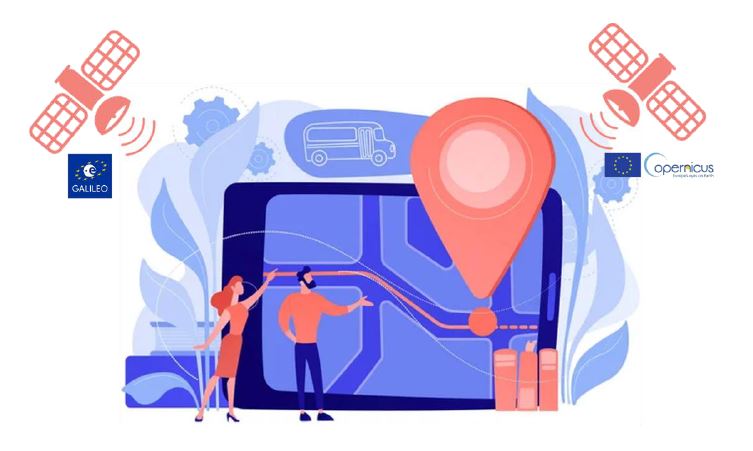


MOTIONAL
MOTIONAL is a project that seeks to improve the planning and operational management of rail services, to make the future European rail system interoperable, resilient and capable of adapting capacity and integrating all the services involved, taking advantage of the opportunities of digitalisation. Through the development of functional requirements and operational and technological solutions, the aim is to pave the way for the implementation of the future European Rail Traffic Management System (known as ERTMS) to make rail the backbone of a multimodal transport system for passengers and freight.
FGC is participating in the project by providing data on demand and service planning, together with the main European agents in the railway sector.
Funding: ERJU European Programme



GREEN-LOG
The European project GREEN-LOG aims to accelerate changes in last mile freight delivery systems in a sustainable way, from an economic, environmental and social point of view. The main development it provides is to create an innovative simulation environment for the creation of different scenarios that combine innovative solutions and allow the integration of live delivery interventions with the highest possible impact in terms of sustainability, traffic reduction, or economic viability. New technologies and tools are also developed to carry out deliveries, such as autonomous robots, or the use of public transport. The project is deployed and validated in five cities and areas with very different realities: Athens, Barcelona, Flanders, Oxfordshire and Ispra.
FGC participates in the project by providing data on the use of the lockers located in various stations of the networks, as well as modelling the possible incursion of rail in the modal chain of urban distribution of goods, or in carrying out a pilot test of the behaviour of a distribution robot inside a train.
Funding: Horizon Europe Programme




ICOS
The ICOS project aims to define, create and validate an IoTcloud Operating System that facilitates management, data processing and execution, both on the edge and in the cloud, in a data-driven system built on the principles of openness, adaptability and data exchange, being adaptable to multiple different systems and enterprises. The origin of the idea arises due to the large proliferation of new computing and sensing device technologies across industries, and the growing demand for data management and analytics applications on the edge and in the cloud, thanks to the wave of IT system architecture transformation.
FGC is participating in a railway use case, where it is developing a system for monitoring railway structural alerts (RSAM), improving the railway monitoring process and optimising infrastructure maintenance. These tests are carried out in the Gerb area, on the Lleida – La Pobla de Segur line, where the infrastructure is monitored thanks to inclinometric chains located around the tracks, and vibration and inclination sensors on the sleepers.
Due to the transversal nature of the solution proposed in the project, in addition to the railway use case, tests and validations are also being carried out on multimedia information systems in cars, on an operational robot platform for the agricultural sector, and on a management and decision-making system for the energy sector.
Funding: Horizon Europe Programme


PHOENI2X
The PHOENI2X project develops a cyber resilience framework to provide orchestration, automation and response capabilities thanks to the assistance of Artificial Intelligence (AI) for business continuity and recovery. In addition, it provides the ability to respond to incidents and facilitate information sharing between different actors, tailored to the needs of Essential Service Operators, and National Authorities in charge of cybersecurity.
The solution is being tested during the project in three critical infrastructure use cases: Energy, Health and Transport (FGC). In the case of the railway use case, monitoring data from infrastructures that are susceptible to cyber-attacks are used.
Due to the complexity and confidential nature of much of the information used in the project, PHOENI2X is considered a ‘restricted’ project of the European Commission, and for this reason it is coordinated with the Spanish CNI, which is in charge of this type of initiative.
Funding: Horizon Europe Programme




Re-Plan City LIFE
The main objective of the project is to raise awareness of the opportunities of the circular economy for materials, products and applications obtained from tyre recycling, in order to stimulate the adoption of environmentally friendly behaviours and practices in urban communities. The aim is to make available models and experiences that can be easily adopted to improve transport infrastructures (roads and railways), concrete and construction (steel fibre reinforced concrete for industrial floors and roads, rubber sheets and layers for noise reduction, or recycled fibre textile ceilings for insulation), urban furniture, sports and leisure products and applications (sports facilities or rubber surfaces for multi-sport activities).
Ferrocarrils’ role in the Re-Plan City LIFE project is based on providing data, information, advice and dissemination on the uses of these materials in the railway sector, as well as promoting sustainable public procurement policy initiatives. It also enables FGC to keep up to date with trends in the sector and the circular economy.
Funding: European LIFE Programme




Europeans
Finished
INTERMODEL
Rail freight transport in Europe has a much lower market share than road transport, partly due to the rigidity of operation in the centres of production, consumption and intermodality. This project develops an integrated decision platform for the design and planning of intermodal logistics terminals that allows for a reinvention of the current transport model. Taking into account that freight transport is a growing activity in FGC, this tool allows the optimisation of current processes and the increase of this activity.
The main characteristics of the platform are as follows:
– Tool based in BIM methodology adapted to logistic intermodal terminals taking into account design, planning, operation and maintenance phases.
– Advanced simulations of various scenarios in the different terminal options with indicators of: costs, maintenance, energy efficiency, productivity, capacity and environmental impacts.
– Assessment of impacts on the terminal surrounding area and on the existing logistics network regarding functional, economic and environmental dimensions.
– Optimisation of the logistic processes based in the intermodality.
Subsidy: European program H2020





HERMES
Freight transport by rail is a growing activity in FGC, as is the case with the transport of potash and salt between the Súria mines and the port of Barcelona on the Llobregat-Anoia line, since rail is a highly efficient means of transport for freight in terms of land use, energy consumption and greenhouse gas emissions. Even so, the market share of rail freight transport and its economic efficiency is still limited. With the aim of improving performance at both operational and maintenance level, this project develops a new freight wagon in which the aspects that optimise this activity are holistically addressed:
– Improvement of logistics operations.
– Increasing the loading capacity of the wagon.
– Optimisation of loading and unloading processes.
– Development of predictive maintenance.
– Increasing the flexibility of the wagons to promote intermodality and allow the diversification of the materials transported.
Subsidy: European program H2020



AUGGMED
Carrying out traditional simulations in FGC facilities, which are necessary for the training of agents in charge of responding to different emergencies, is currently a complex and resource-intensive organisational process. AUGGMED has developed a training game platform that allows both individual and group training in a variety of situations, thus providing the user with skills such as emotional management, analytical thinking, problem-solving skills and appropriate decision-making. In this way, the experience necessary for efficient action in the event of any emergency that threatens the safety of FGC users and employees is provided in an optimal manner.
The main features of the platform are:
– Simulations that include: various installations, various agents involved, communications between teams and damage caused.
– Inclusion of tools for trainers that allow: setting training objectives, defining scenarios, monitoring training sessions, modifying scenarios, real-time feedback and personal evaluation and follow-up of the training.
– Platform available in an affordable way for different devices in: simple virtual reality, immersive virtual reality and immersive mixed reality in situ.
Subsidy: European program H2020




EUTRAVEL
This project aims to develop an IT platform to organise, plan and purchase multimodal door-to-door journeys by bringing together all available European mobility services and removing interoperability barriers between modes of transport. The benefits arising from the union of all the information, planning and sale of trips are at the following levels: social, facilitating the process with optimal information for passengers, including those with special needs; environmental, optimising itineraries based on environmental criteria and promoting the use of public transport, cycling or walking; and economic, making visible better transport options for the traveller, as would be the case of the FGC rail network.
The characteristics of the platform consist of:
– Open and easy-to-use intermodal travel options framework that integrates data and systems ranging from planning to booking and payment for the entire set of decisions.
– Open infrastructure that enables organisations to establish cost-effective integration of existing systems and create value-added multimodal travel services.
– Evaluation of new multimodal travel concepts and solutions that quantify user and societal variables.
– Providing measures for sustainable development with the involvement of stakeholders.
Subsidy: European program H2020




5G-PICTURE
In a railway system today, a multitude of independent telecommunications networks coexist to support both critical and non-critical network communications. Examples are TETRA radio communication, train-to-ground communications for safe traffic control systems or WIFI systems for sending images of the inside of trains.
The 5G-PICTURE project develops and demonstrates a communications infrastructure based on wireless optical networks with 5G CONNECTION, which makes it possible to group the multiplicity of current networks into a single one, thus optimising the cost of the entire life cycle as well as improving the communications themselves.
Some of the key tools enabling this paradigm shift are:
– Resource unbundling, which allows the decoupling of components by creating a pool of resources where they can be independently selected and located on demand to compose any desired infrastructure service.
– Network softwarització, migrating from the conventional closed network model to a network supported by an open reference platform.
– Programmable hardware, where hardware is configured directly on top of network functions to provide the required performance.
Subsidy: European program H2020

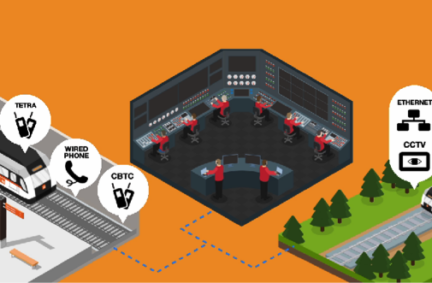

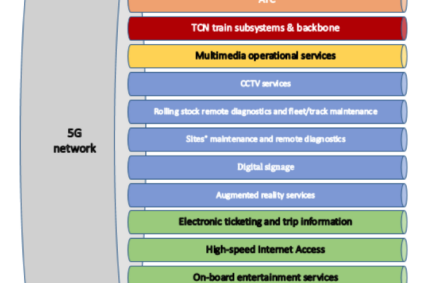
SAFETY4RAILS
The SAFETY4RAILS project focuses on the development of management systems and models to increase security and resilience against both physical and cyber attacks that compromise the stability of the railway service or security.
The project analyses different scenarios of the railway operators participating in the project and provides tools to address these situations holistically with efficient mitigation and response strategies.
FGC is one of the 8 participating railway operators and worked on two scenarios of complex incidents to try to minimise the impact and optimise the responses of the teams involved and the restoration of normal service.
Subsidy: European program H2020

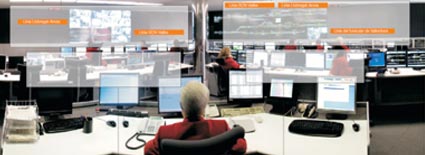

LOCATE
The main objective of the LOCATE project is to provide the methodology and tools necessary for any entity in charge of maintenance to be able to implement a predictive maintenance system for locomotive bogies.
The fundamental pillars of the new predictive maintenance system are based on the optimisation of operation and maintenance in terms of availability, safety and economics.
The sensor system developed specifically for locomotive bogies has been tested and validated on the rolling stock of Ferrocarrils de la Generalitat de Catalunya. Specifically, on a 254 series freight locomotive.
Subsidy: European program H2020

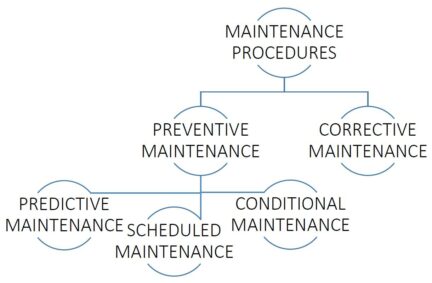
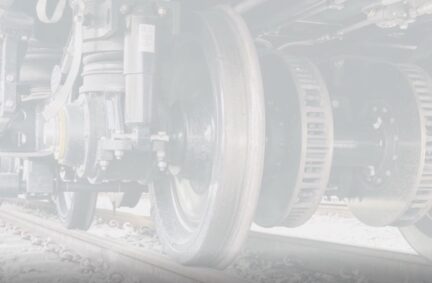
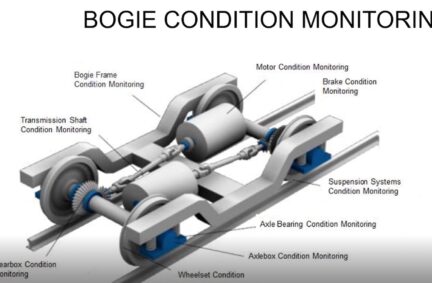
DIAMOND
The main objective of the DIAMOND project is to transform data into knowledge applicable to the management of equality and the inclusion of women in different areas of transport.
This objective is achieved by developing a methodology based on obtaining disaggregated data from new sources of information and analysing them by means of advanced techniques such as data mining. The methodology was collected in a tool that allows the identification, design and evaluation of specific measures that meet the requirements of equality and inclusion of women as users and workers in the transport sector.
To validate the tool, different scenarios are analysed in terms of inclusion and equality, including the characteristics of jobs related to the FGC railway workshop, traditionally with a higher number of male employees, and the characteristics of FGC stations.
Subsidy: European program H2020

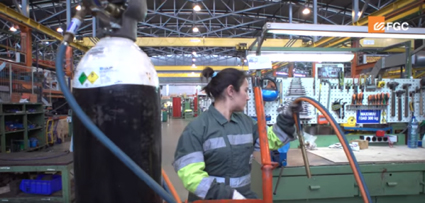
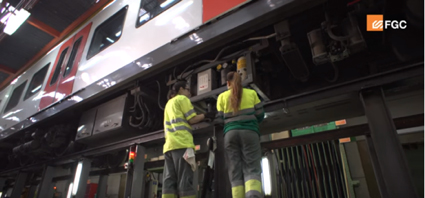
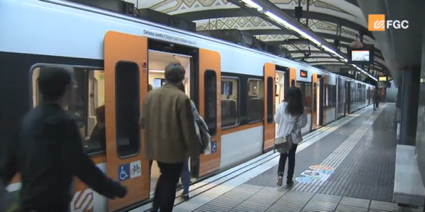
SIA
In Europe, rail maintenance costs at infrastructure and rolling stock level are estimated at over 20.000M€ per year, 40% of which is located specifically in four elements: wheels, rail defects, catenary and pantograph.
The SIA project, System for vehicle-infrastructure Interaction Assets health status monitoring, aims to develop four maintenance management modules to provide real-time information on the status of these elements, predicting their future condition, and assisting in the management of necessary interventions.
These tools lead to streamlining the maintenance process by acting only when the systems request it, thus optimising both costs and maintenance operations. The characteristics of these modules are:
– Web Application based software that could be integrated with other current maintenance information systems, thus avoiding the need to replace entire systems.
– Real-time information on the status of monitored elements and predictions of future status based on different scenarios.
– Link between maintenance workflow management and traffic information systems to inform about failures, speed restrictions or line blocking, resources needed, etc.
Subsidy: European program H2020


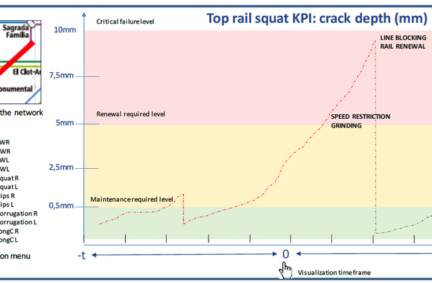
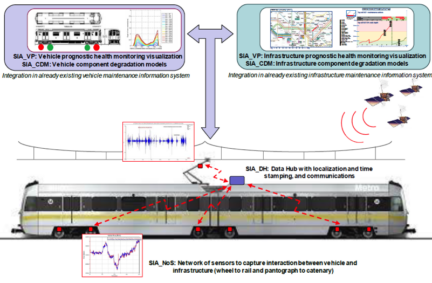
EPIREMED
EPirEMed is a cross-border cooperation project with the aim of taking a step forward in the tourism integration of the territories of the Eastern Pyrenees on both sides of the border between France and Catalonia.
Through collaboration between the main public and private tourism entities, the aim was to create new cross-border tourism products, developing a joint marketing and promotion strategy on a national and international scale.
EPirEMed selected the range of services, products and experiences to be promoted on the basis of sustainability, quality and added value for both the tourist and the territory, linking rural and mountain tourism with sustainable transport alternatives.
Subsidy: European Funds for Regional Development (FEDER)


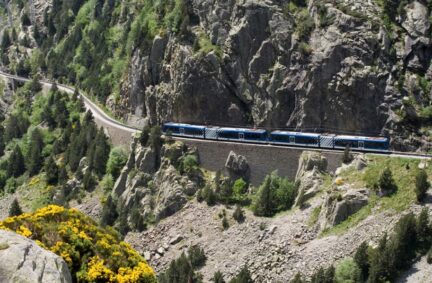
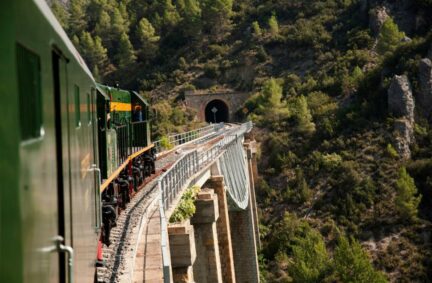
TRAILS
The objective of the TRAILS project is to increase the number of rail freight links between Catalonia and Occitania and to contribute to the increase of the rail share in the Mediterranean corridor.
The main aim of the project is to facilitate the identification of new transnational rail transport routes, both in terms of improving the supply and the number of links and to provide effective support for the consolidation of freight transport by multi-client and multi-product services between the two territories.
Work was also carried out to achieve greater interoperability of rail infrastructures, as well as to try to bring the strategies for planning logistical infrastructures and support services for multi-modality in Catalonia and Occitania closer together.
Subsidy: European Funds for Regional Development (FEDER)

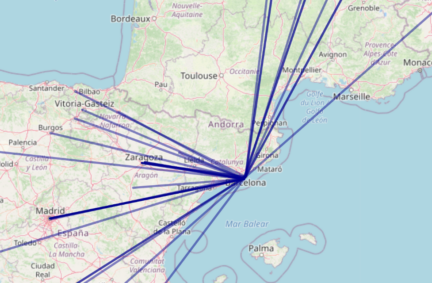
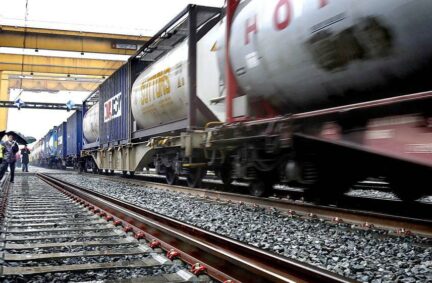
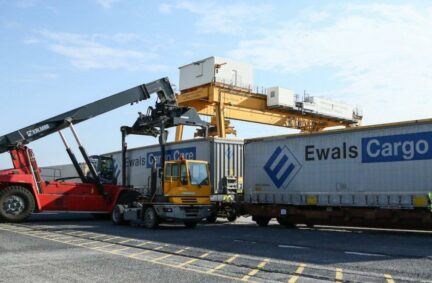
Nationals
In progress
Nationals
Finished
GLUBAA
The aim of the GLUBAA project is to develop new industrial lubricating greases highly safe, biodegradable, self-extinguishable and anti-vibrating with applications in railway facilities.
In a first stage, some compositions for these greases were analysed and developed by the technology centres and manufacturers involved in the project. Subsequently the greases were tested in the laboratory to ensure their properties, applications and their biodegradable properties.
The grease developed to grease the flange of the wheels was installed in a FGC train unit from Barcelona – Vallès line. After analyse the good performance in field and document the correct working of the new grease, with ECO label and competitive against other similar products, the grease has been installed in the whole vehicle fleet.
By using this grease we are taking care of the environment not only due to its biodegradable nature but also due to it is a product supplied from the FGC surroundings with a transport of scarce kilometres.
Subsidy: Catalan program Nuclis de Recerca




BEA
The general objective of the project is to develop technologies that allow for the detection, location and diagnosis, in incipient states of cracks of critical elements of the bogie, such as the axes, as well as the evolution of these cracks, making possible the prediction of the fracture of the component once the presence of a crack is detected.
The proposed technology can be installed in both existing and new bogies. It is estimated that in a first phase the product will receive a better reception to be installed in the bogies that are already in circulation since the probability of failures is greater than in the new bogies newly exited from the factory. In the long term, operators will require manufacturers to incorporate the new product in the bogies as standard.
Subsidy: State program Retos




HERMES II
The HERMES project is proposed as a new information system and management of the railway maintenance that implies a leap forward in the following areas:
– Modularity and scalability: HERMES will have some modules that can be used separately or integrated in a single solution based on Cloud Computing.
– Risk management: In order to establish a vehicle and infrastructure maintenance policy, the decisions risk must be known.
– Economic optimisation of the maintenance process through maintenance logistics modelling and the assessment of their costs.
– Control and monitoring of maintenance tasks through a ticketing system of maintenance and incidents.
Subsidy: State program Retos


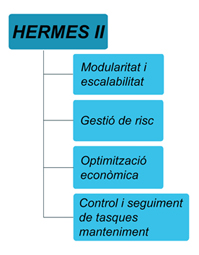
ROBOTRACK
The overall objective of the Robotrack project is the development of a new economic and sustainable ballastless track, especially designed to establish an innovative fully automated installation process using a new robotic system.
From a global perspective, the project proposes innovations in design, materials and processes which allows the product to be much more competitive with respect to the ballastless tracks that currently exist in the market.
Subsidy: State program Retos



OPTICON
The aim of this project is to develop a decision-making support tool for railway and infrastructure operators to optimise the electric consumption of the system. To address this, the objective is to develop a software capable to simulate a complete rail network in terms of energy consumption and able to give response to answers like: Which electricity supply contract suits better?, Which way of driving reduces the consumption while maintaining the quality of service?, What time of return is there when introducing an ATP or a converter change?
In order to answer these questions, the tool must contain an adequate model of each of the elements of the system:
– Model of the power supply network, including all components of the electrical infrastructure such as traction substations, catenary or converters.
– Model of consumption of the traction system, which will include the dynamics of the train as well as the auxiliary consumptions. To do this will require all the characteristics of the vehicle, as well as the path on which it circulates, to be known. Finally the on-board regeneration systems of braking energy will be taken into account.
Subsidy: State program Retos


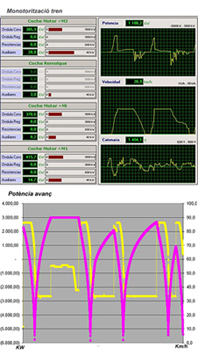
SINATU
The general objective of the SINATU project is to design a new inertial auscultation system to install in a tunnel which will be capable of characterise the structural state of the concrete that forms part of the coating while the vehicle passes through it. The specific objectives to achieve the goal are the following:
– Design of inertial sensors network to place on the concrete lining of the tunnel which will be able to record the vibratory behaviour.
– Design and development of a long-range communication system capable to obtain the information registered by the sensors and to send it automatically and instantaneously to the control centre.
– Design of a management software able to process and analyse the sensors data and to obtain as a result the structural state of the concrete lining of the tunnel detecting, classifying and locating the defects in it.
Subsidy: State program Retos


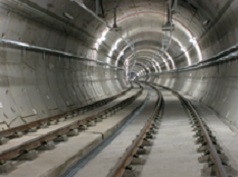
PREDIVIA
The overall objective of the project is to develop technologies able to detect, to predict the evolution and to make a diagnosis of incipient cracks in initial states situated in critical elements of the railway infrastructure such as switch tongue of track diversions. This will make it possible to predict the component fracture once the crack is detected.
The continuous monitoring of such elements will result in a substantial increase in infrastructure security as well as a reduction in costs of operation and maintenance; maximising the availability of the infrastructure, increasing its effective life and minimising the impact of repair operations.
Currently, rail operators or infrastructure maintenance areas, such as FGC, in order to determine whether to perform maintenance on tracks, in addition to visual inspection, track auscultation in which some values of different geometric parameters are recorded and depending on these, the maintenance is programmed. The implementation of this predictive system will thus lead to intelligent maintenance.
Subsidy: State program Retos



RAILFILLER
The main objective of RAILFILLER project is to develop a system for the recovery of metallic track components that have been damaged during normal use. The main component to be studied during the developments is track rail and the solution will be provided by using LMD (Lase Metal Deposition) technology.
The solution is proposed as an in-situ reparation system that will allow cost reduction of current maintenance carried out in rail metallic components. The solution will also allow to reduce the environmental impact by the reuse of components, which means to contribute to a higher sustainability in processes related to railway transport.
Subsidy: State program RETOS


